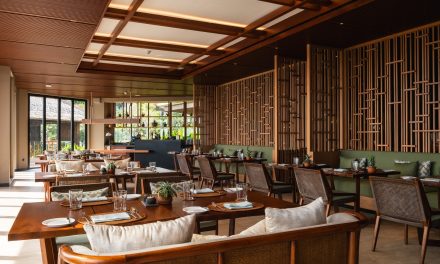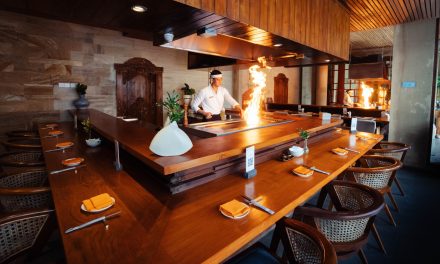Bali is a paradise not only for its stunning beaches and lush landscapes but also for its rich cultural heritage, particularly its temples. If you’ve ever wandered through the serene island of Bali, you might have noticed the intricate beauty of these sacred structures. Each temple, or pura, showcases a distinct architectural style that tells a story as old as the island itself. In this article, we will explore the various architectural styles of Bali temples, sharing personal anecdotes and insights to make it an engaging journey.
The Basics of Balinese Temple Architecture
Before diving deep into specific styles, it’s helpful to understand some common features that define Balinese temple architecture. Most temples in Bali are built following a unique layout influenced by both Hindu and indigenous Indonesian beliefs. A typical temple compound is divided into several zones, with the most sacred areas reserved for worship and rituals.
I remember my first visit to the iconic Uluwatu Temple perched on a cliff, with waves crashing below. The intricate carvings and the stunning backdrop made me feel as if I had stepped into a painting. The temple’s design follows the typical layout with a series of shrines, each dedicated to different deities, reflecting the belief system of the Balinese people.
Meru Temples: Towers of Harmony
One of the most prominent styles you’ll encounter is the Meru temple, characterized by its multi-tiered roof which resembles a pagoda. The Meru typically consists of odd-numbered levels, which can range from three to eleven tiers. These roofs are believed to represent the mythical Mount Meru, the center of the universe in Hindu cosmology.
During my visit to Pura Taman Ayun in Mengwi, I was captivated by the sight of its Meru towers. Standing amidst the lush gardens, I could almost feel the harmony between the spiritual and the earthly realms. The temple’s Meru structures, adorned with intricate carvings, epitomized the balance and beauty that Bali is renowned for.
Kahyangan Jagad: The Cosmic Connection
Another fascinating architectural style is Kahyangan Jagad, which translates to world’s source. This style emphasizes the connection between the heavens and the earth. Kahyangan Jagad temples often feature large courtyards that allow worshippers to immerse themselves in the sacred space, fostering a deeper connection to the divine.
I’ll never forget my experience at Pura Lempuyang Luhur, known for its breathtaking views and the iconic ‘Gateway to Heaven’. The temple’s tiered layout and expansive grounds invited me to explore while allowing for moments of peaceful reflection. Standing at the top, peering through the gates with the sacred mountain of Mount Agung in the backdrop, I understood why this temple is considered a cosmic bridge between the human and divine.
Aling-Aling: The Duality of Life
Aling-Aling temples are known for their unique dual-gate structure, symbolizing the balance between opposing forces in life – good and evil, light and dark. These temples embody the philosophical teachings of Balinese culture. Scouts like me often get an insight into the local beliefs as they stand in front of these impressive gates.
When I visited Pura Batu Bolong in Canggu, I still remember how the dual gates created a frame for the ocean beyond, reminding me of life’s inherent dualities. As the sun set, casting vibrant orange hues across the sky, I felt my own life’s contrasts reflected in the beauty before me. It was a touching reminder of how architecture can encapsulate broader philosophical teachings.
Characteristic Roofs of Balinese Temples
You simply cannot talk about Balinese temple architecture without mentioning synchronous roofs. These roofs are meticulously constructed using bamboo and thatched grass, layered in a way that they appear to float above the pedestals beneath. Each layer serves a purpose: cooling the interior and creating a stunning aesthetic that complements the natural surroundings.
At Pura Ulun Danu Bratan, I was taken aback by the beautiful multi-tiered roofs reflecting in the serene waters of Lake Bratan. The traditional thatched roofs not only added an element of elegance but also showcased the sustainable practices of the Balinese people. As I stood there, enjoying the tranquil surroundings, I became more aware of our connection with nature and the importance of preserving such beauty.
Practical Advice for Visitors
Exploring Bali’s temples is not just about aesthetics; it’s also about respect and understanding the cultural significance behind them. Here are a few pieces of advice for anyone planning to visit:
1. Dress Appropriately: Most temples require visitors to wear a sarong and a sash. You can often rent them at the entrance, but bringing your own is more convenient and respectful.
2. Engage with Locals: If you have the chance, speak with local Balinese people. Their insights into the significance and rituals of each temple can greatly enrich your experience.
3. Observe Rituals Respectfully: If you happen to visit during a ceremonial day, take a moment to witness the rituals. Be sure to maintain a respectful distance and ask permission before taking photos.
4. Take Your Time: Don’t rush through the temples. Spend time appreciating the art, architecture, and the peaceful ambiance. You might find personal reflections arise in those quiet moments.
Conclusion
The architectural styles of Bali temples provide not just a visual feast but also an insight into a culture rich with tradition, philosophy, and spirituality. Each temple tells a unique story, and the design reflects the intricate relationship between the Balinese people and their surroundings.So, the next time you find yourself in Bali, take a trip to these sacred sites. Allow yourself to be drawn into the stories they tell, the history they preserve, and the peace they offer. Trust me, you’ll walk away with memories that linger long after the sunlight fades at the horizon. Happy temple exploring!






